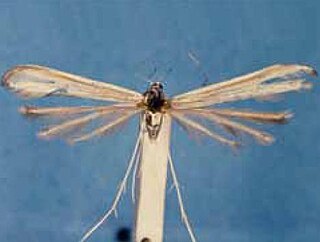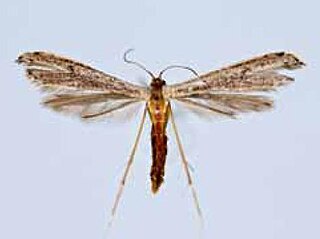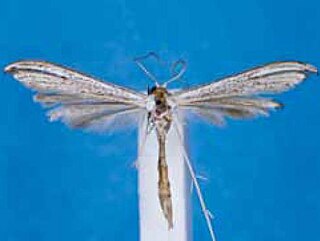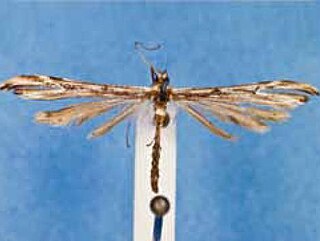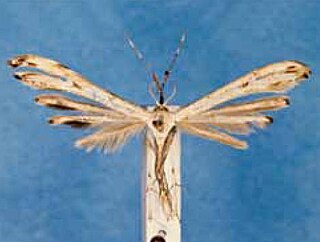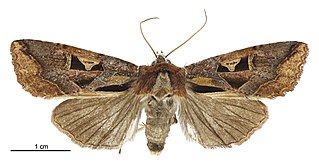| Hellinsia emmorus | |
|---|---|
 | |
| Scientific classification | |
| Domain: | Eukaryota |
| Kingdom: | Animalia |
| Phylum: | Arthropoda |
| Class: | Insecta |
| Order: | Lepidoptera |
| Family: | Pterophoridae |
| Genus: | Hellinsia |
| Species: | H. emmorus |
| Binomial name | |
| Hellinsia emmorus (Walsingham, 1915) | |
| Synonyms | |
| |
Hellinsia emmorus is a moth of the family Pterophoridae. It is found in Mexico [1] and Guatemala. [2]
The wingspan is 28‑30 mm. The antennae are pale ochreous. The head and front of the thorax are whitish ochreous, with a broad brownish ochreous band across the thorax and tegulae. The forewings are pale ochreous, with a broad brownish ochreous diffused shade commencing at the middle of the base and extending to the apex, a pale line running through it along the middle of the apical lobe, the costa also narrowly pale throughout. The hindwings are shining, pale brassy or golden green. [3]


